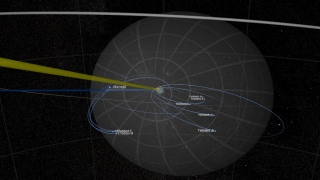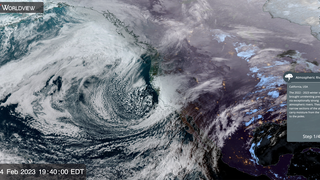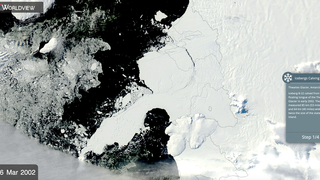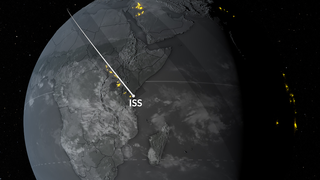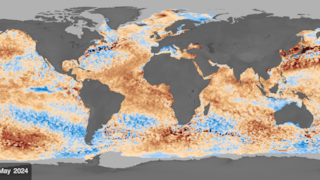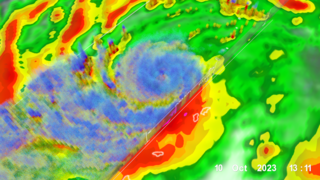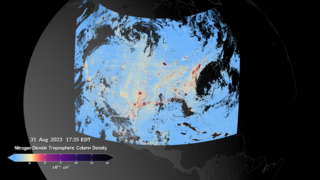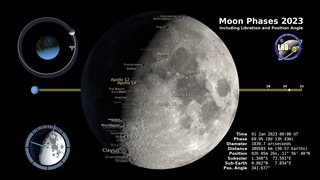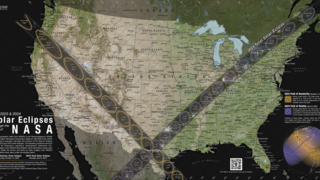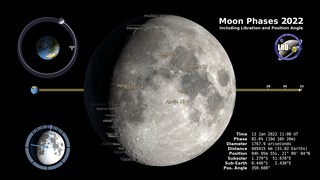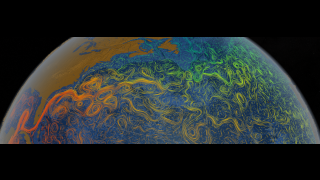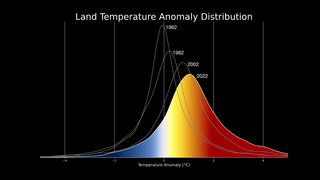Earth
Sun
Planets and Moons
ID: 3595
Heliophysics is a term to describe the study of the Sun, its atmosphere or the heliosphere, and the planets within it as a system. As a result, it encompasses the study of planetary atmospheres and their magnetic environment, or magnetospheres. These environments are important in the study of space weather.
As a society dependent on technology, both in everyday life, and as part of our economic growth, space weather becomes increasingly important. Changes in space weather, either by solar events or geomagnetic events, can disrupt and even damage power grids and satellite communications. Space weather events can also generate x-rays and gamma-rays, as well as particle radiations, that can jeopardize the lives of astronauts living and working in space.
This visualization tours the regions of near-Earth orbit; the Earth's magnetosphere, sometimes called geospace; the region between the Earth and the Sun; and finally out beyond Pluto, where Voyager 1 and 2 are exploring the boundary between the Sun and the rest of our Milky Way galaxy. Along the way, we see these regions patrolled by a fleet of satellites that make up NASA's Heliophysics Observatory Telescopes. Many of these spacecraft do not take images in the conventional sense but record fields, particle energies and fluxes in situ. Many of these missions are operated in conjunction with international partners, such as the European Space Agency (ESA) and the Japanese Space Agency (JAXA).
The Earth and distances are to scale. Larger objects are used to represent the satellites and other planets for clarity.
Here are the spacecraft featured in this movie:
This enhanced, narrated visualization was shown at the SIGGRAPH 2009 Computer Animation Festival in New Orleans, LA in August 2009; an eariler version created for AGU was called NASA's Heliophysics Observatories Study the Sun and Geospace.
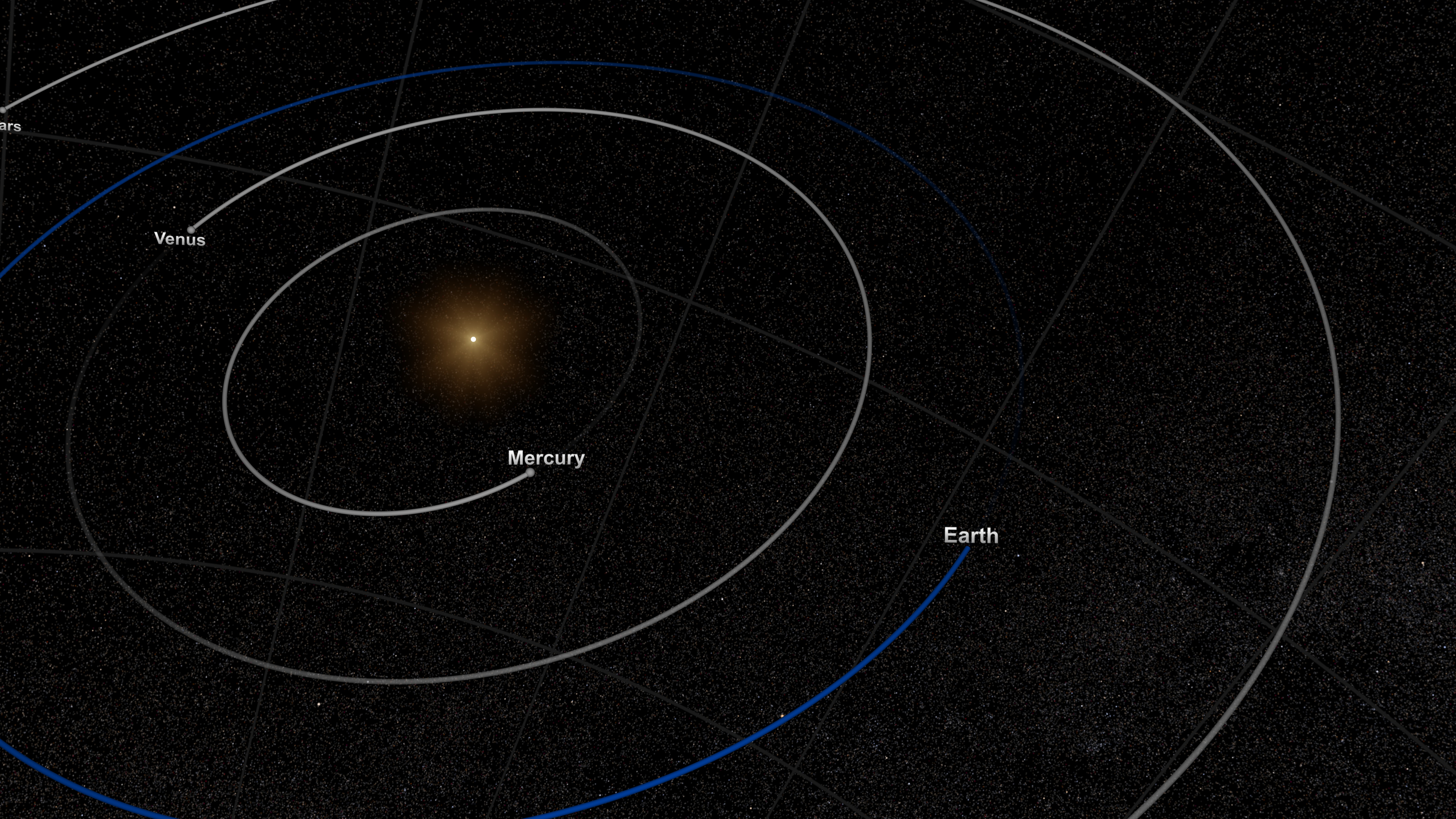
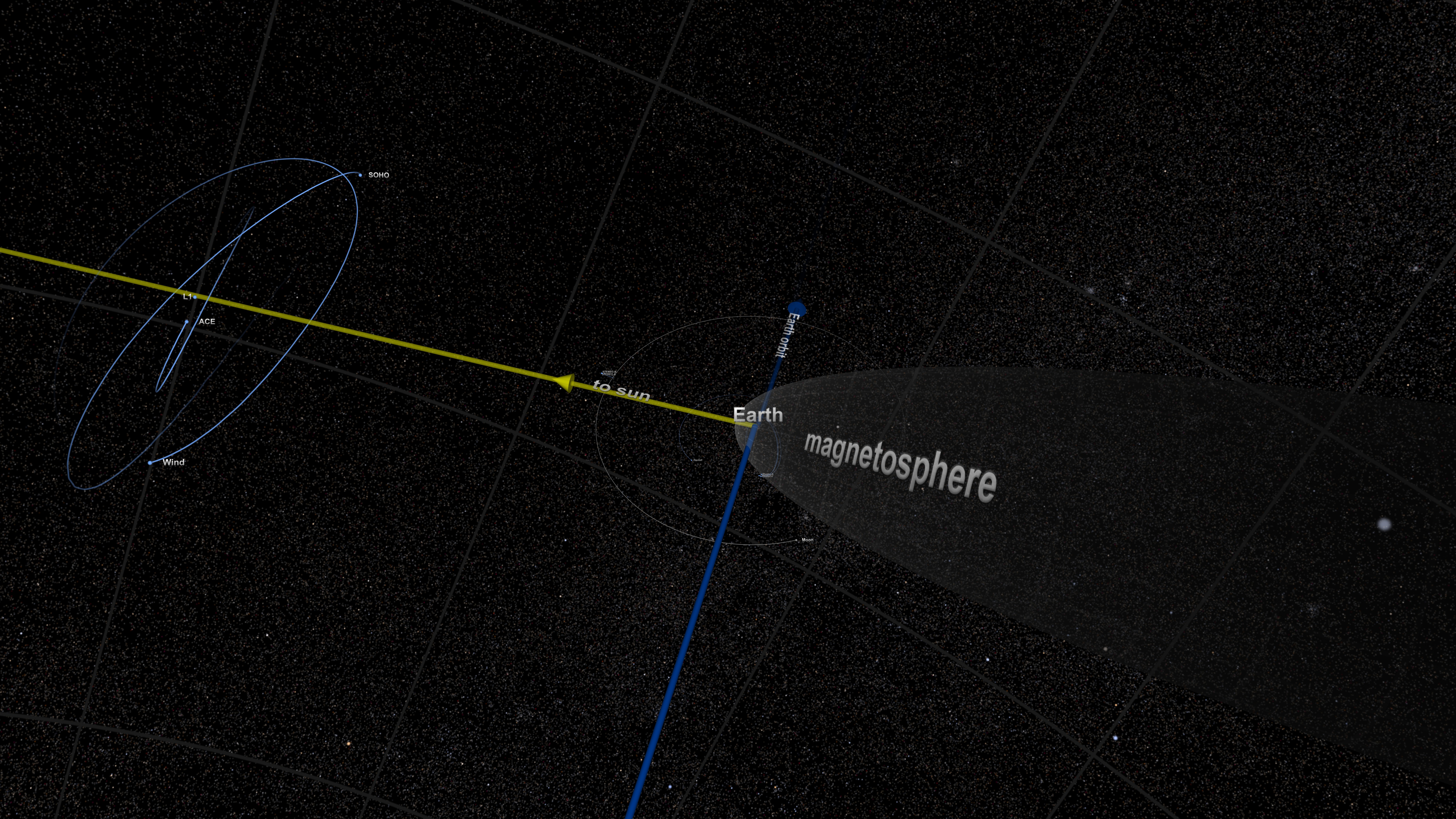
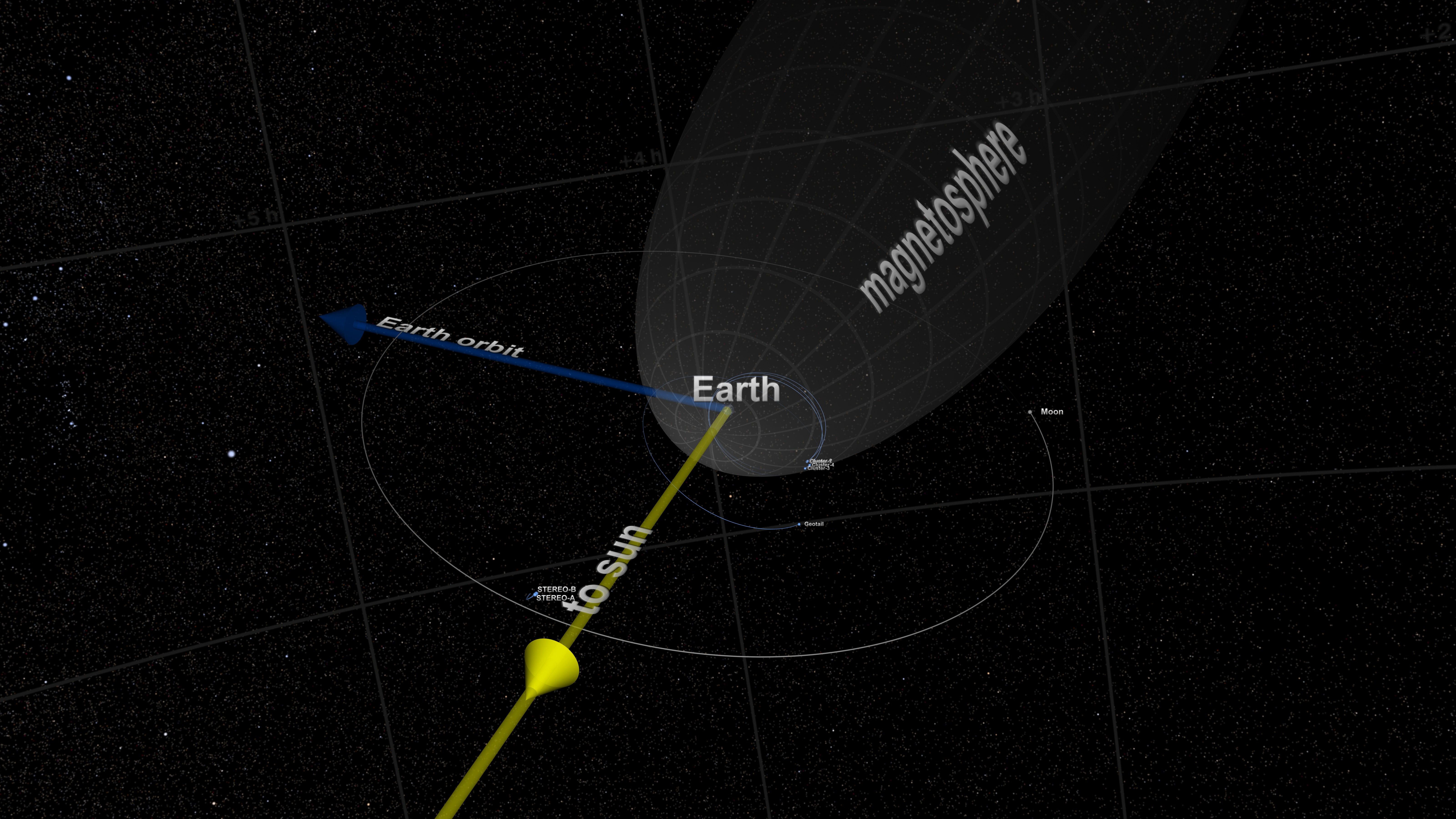
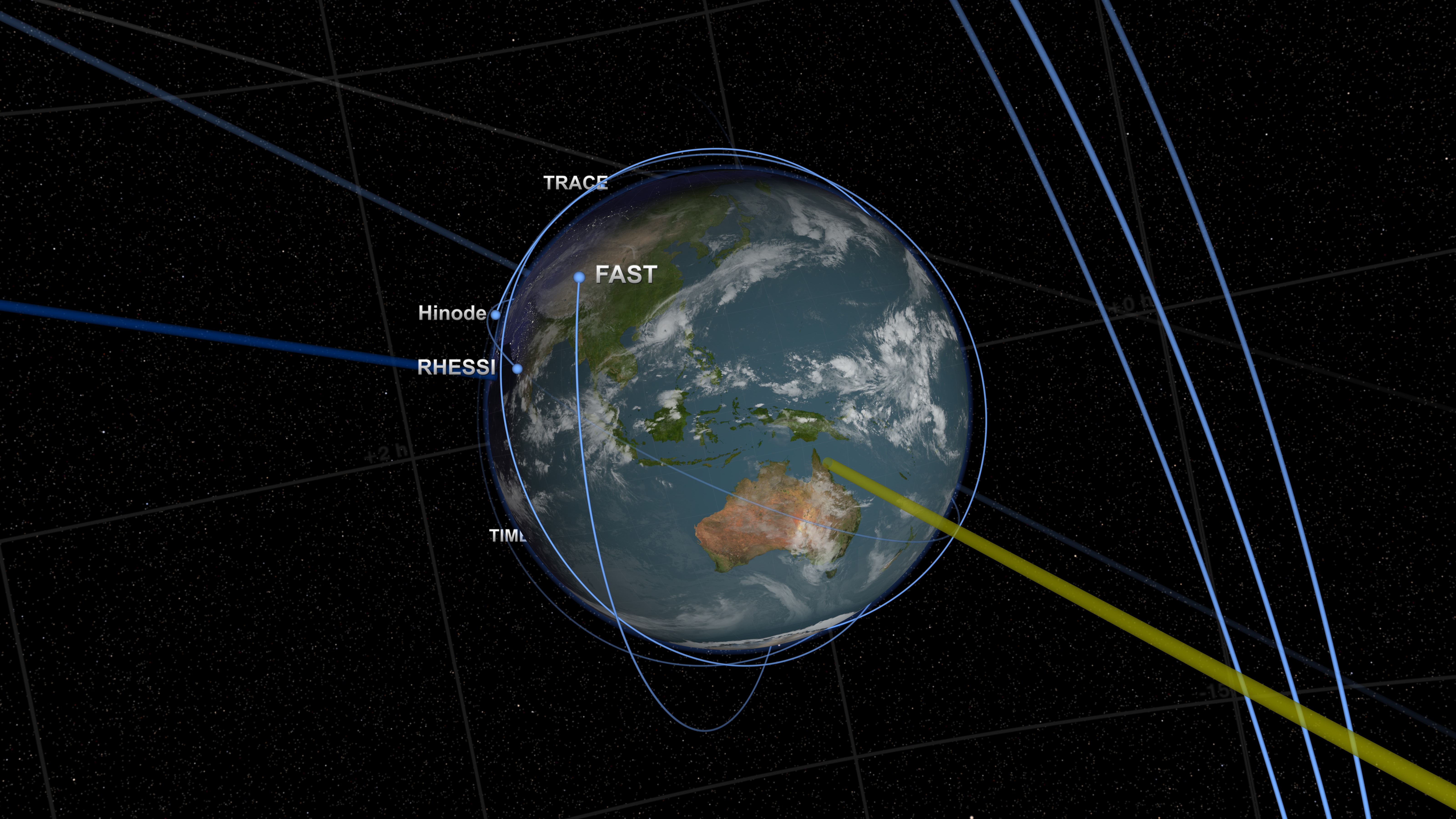
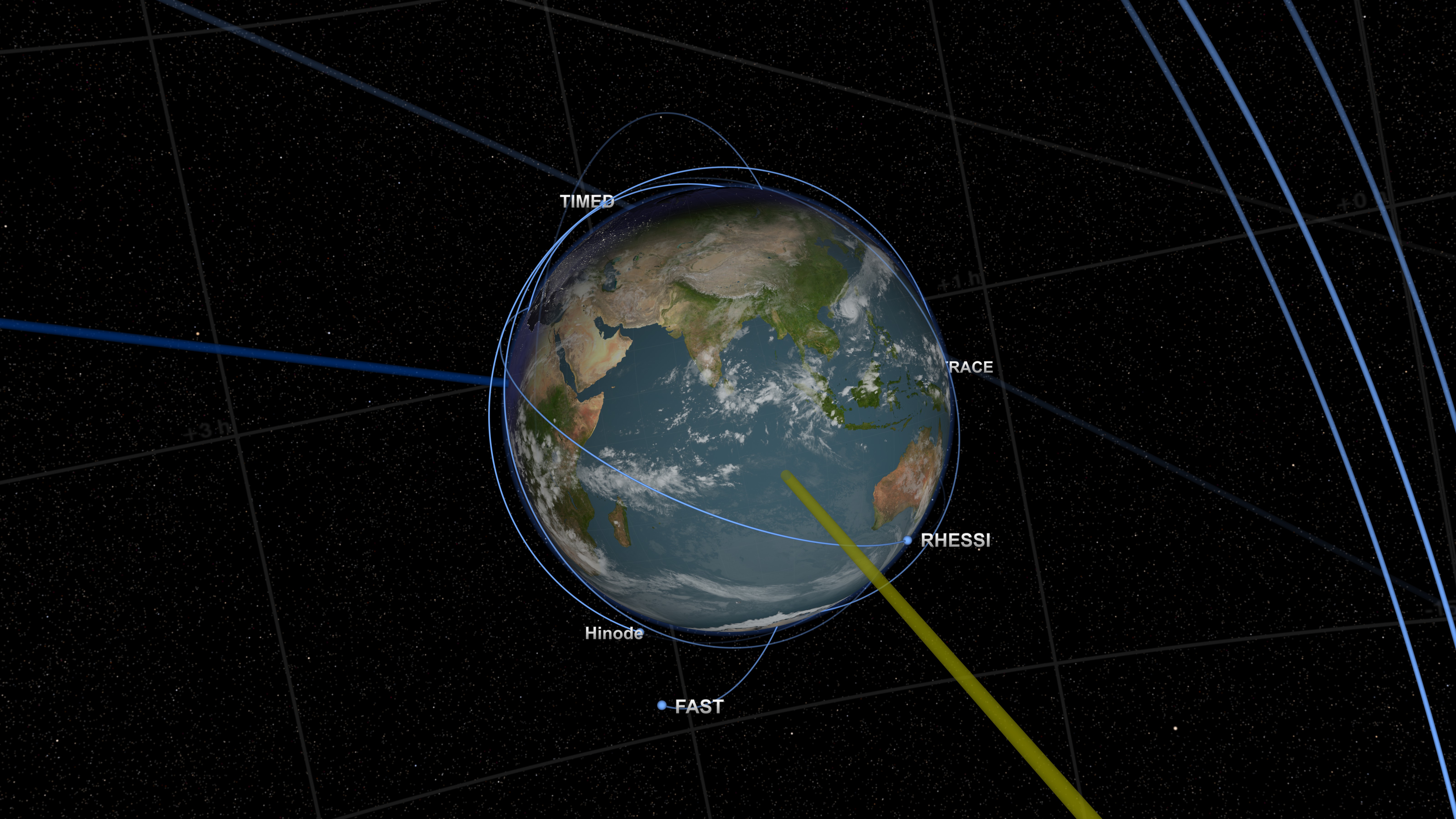
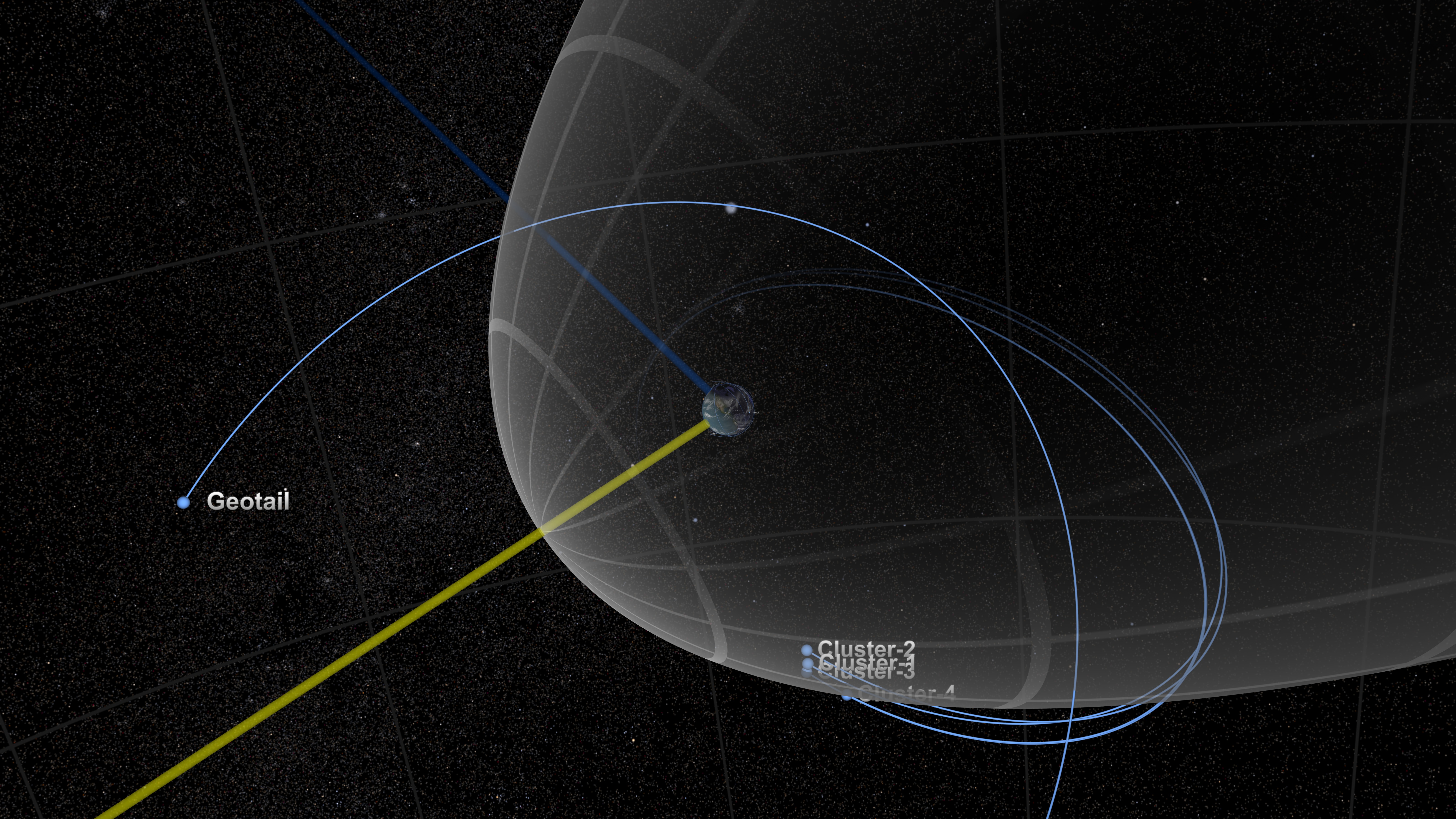
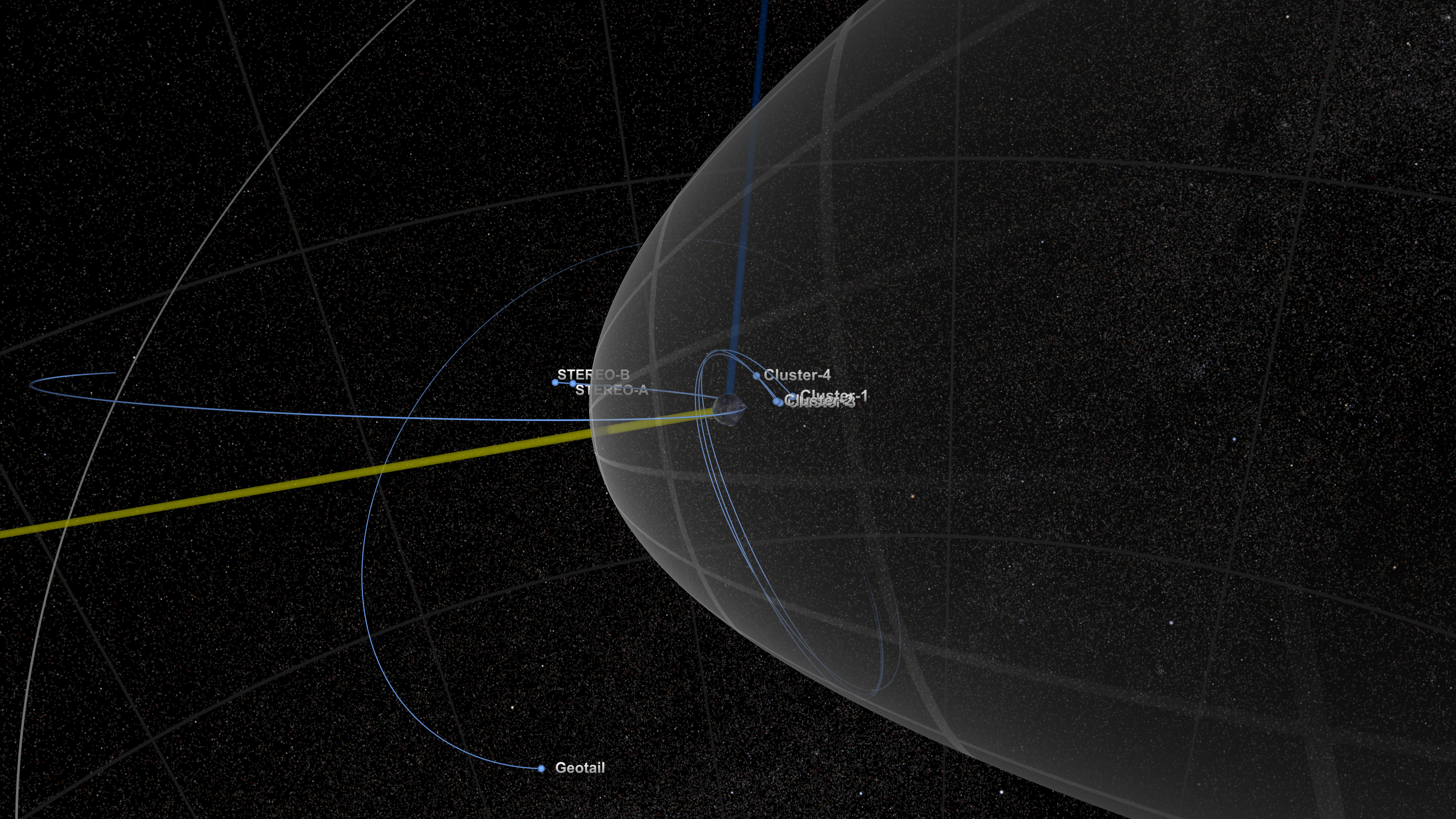
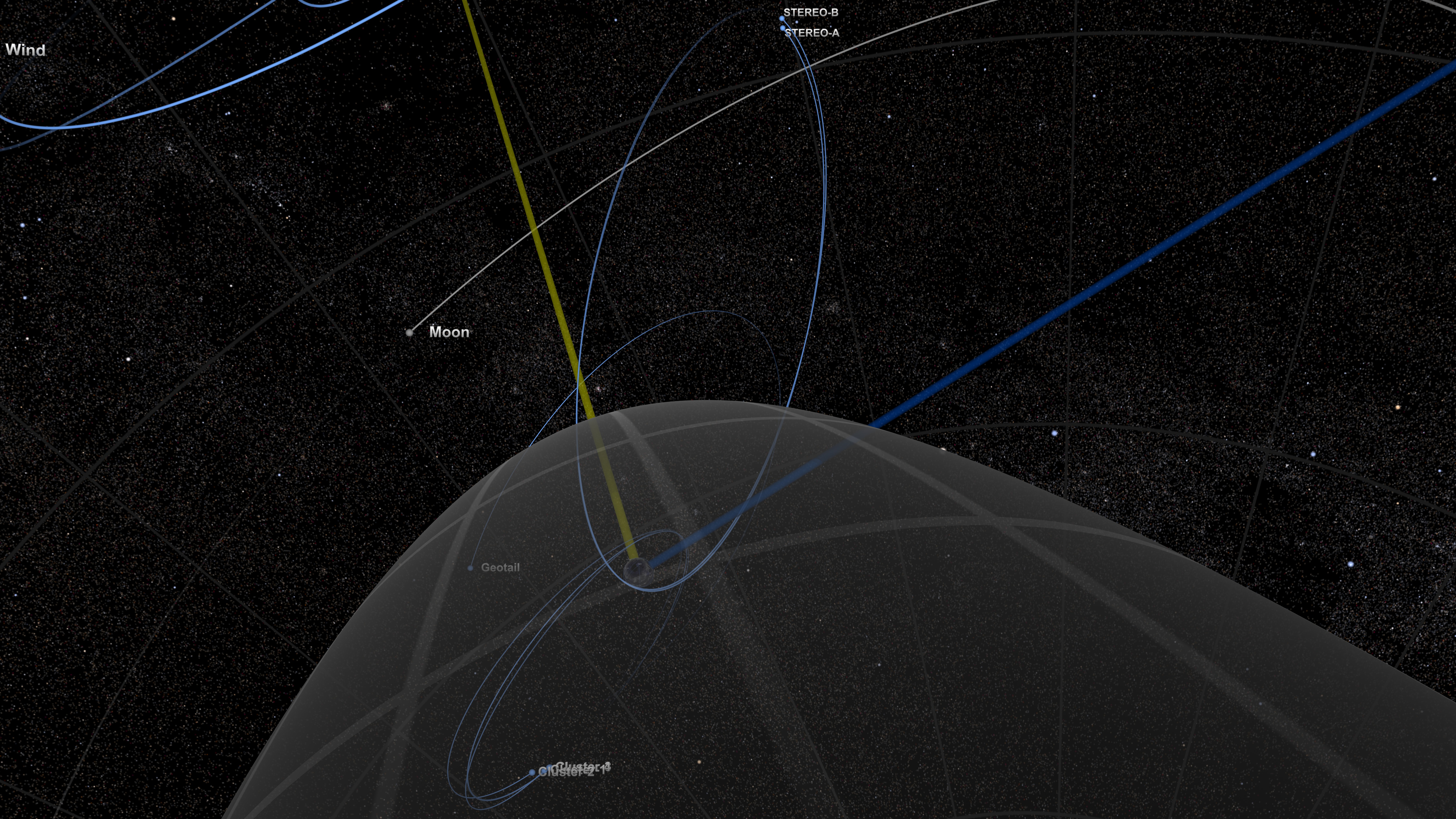
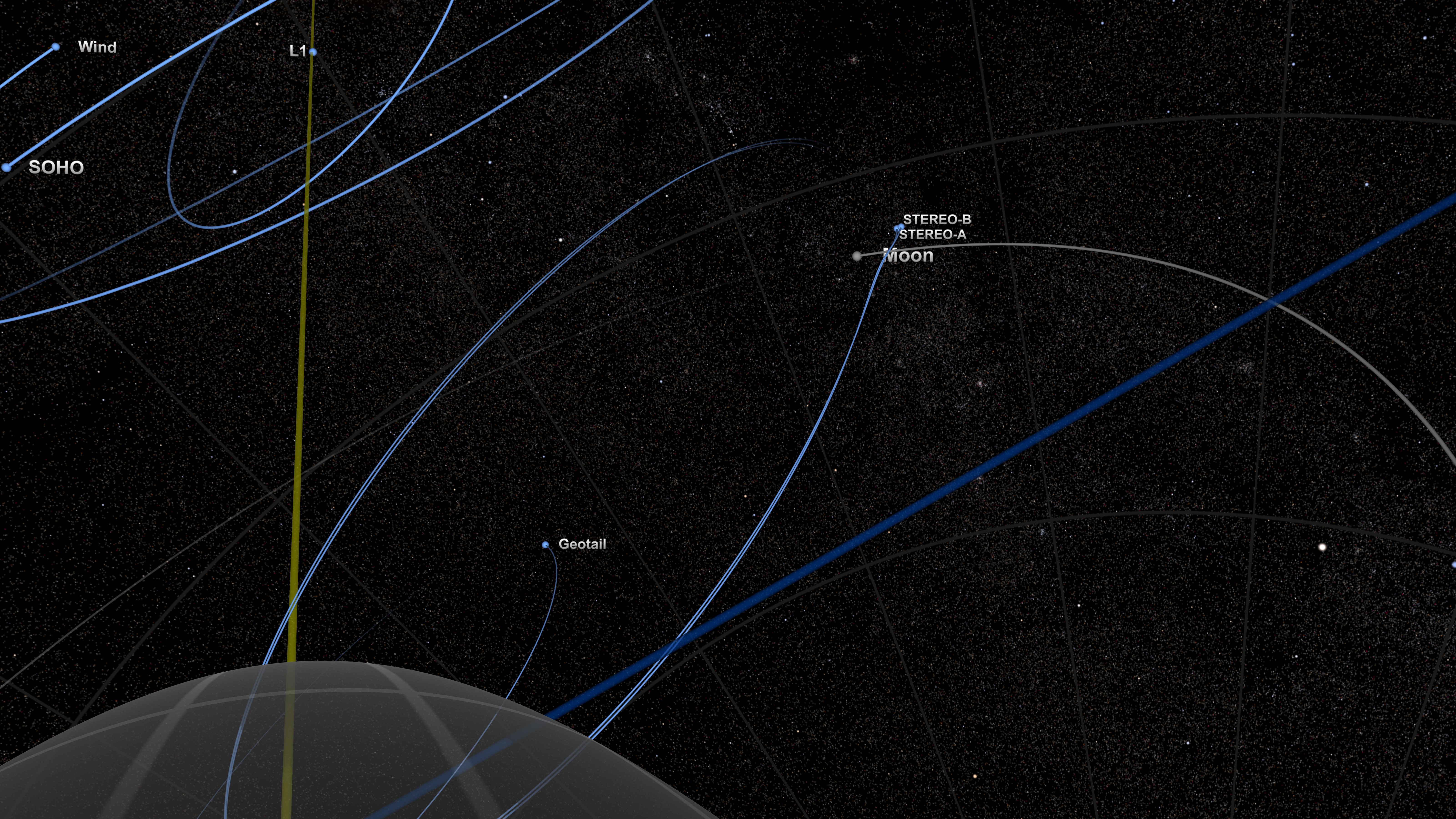
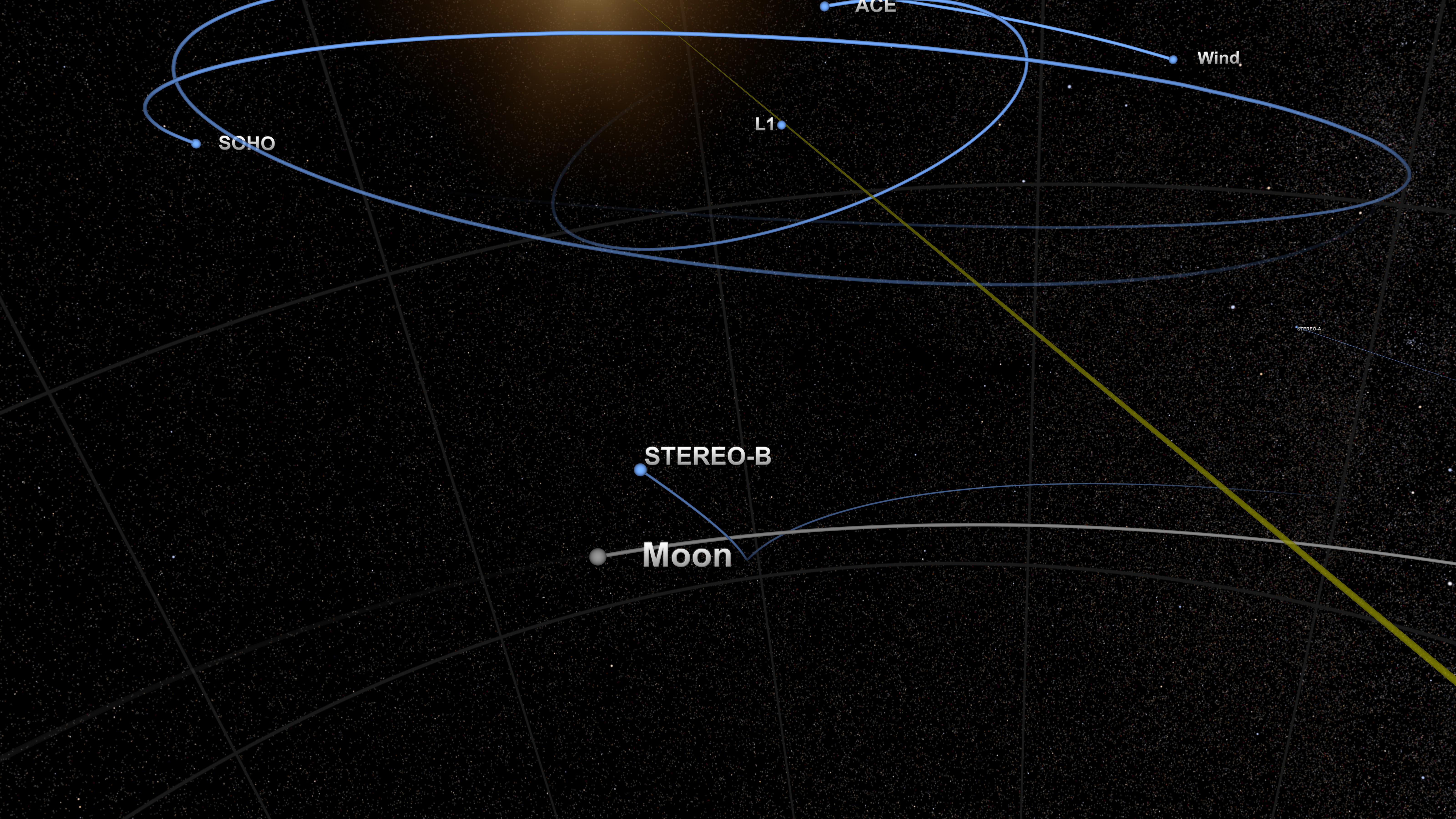
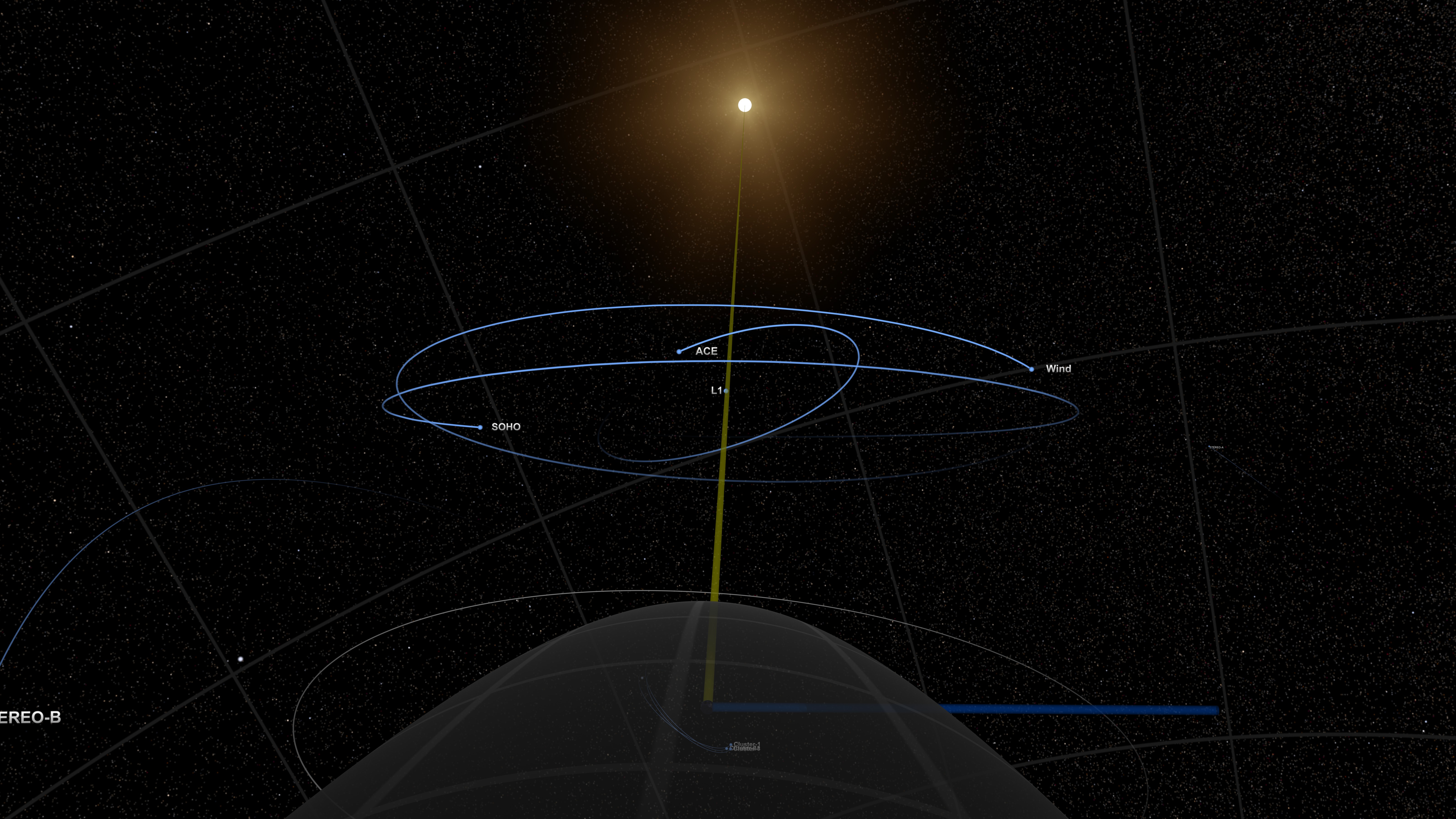
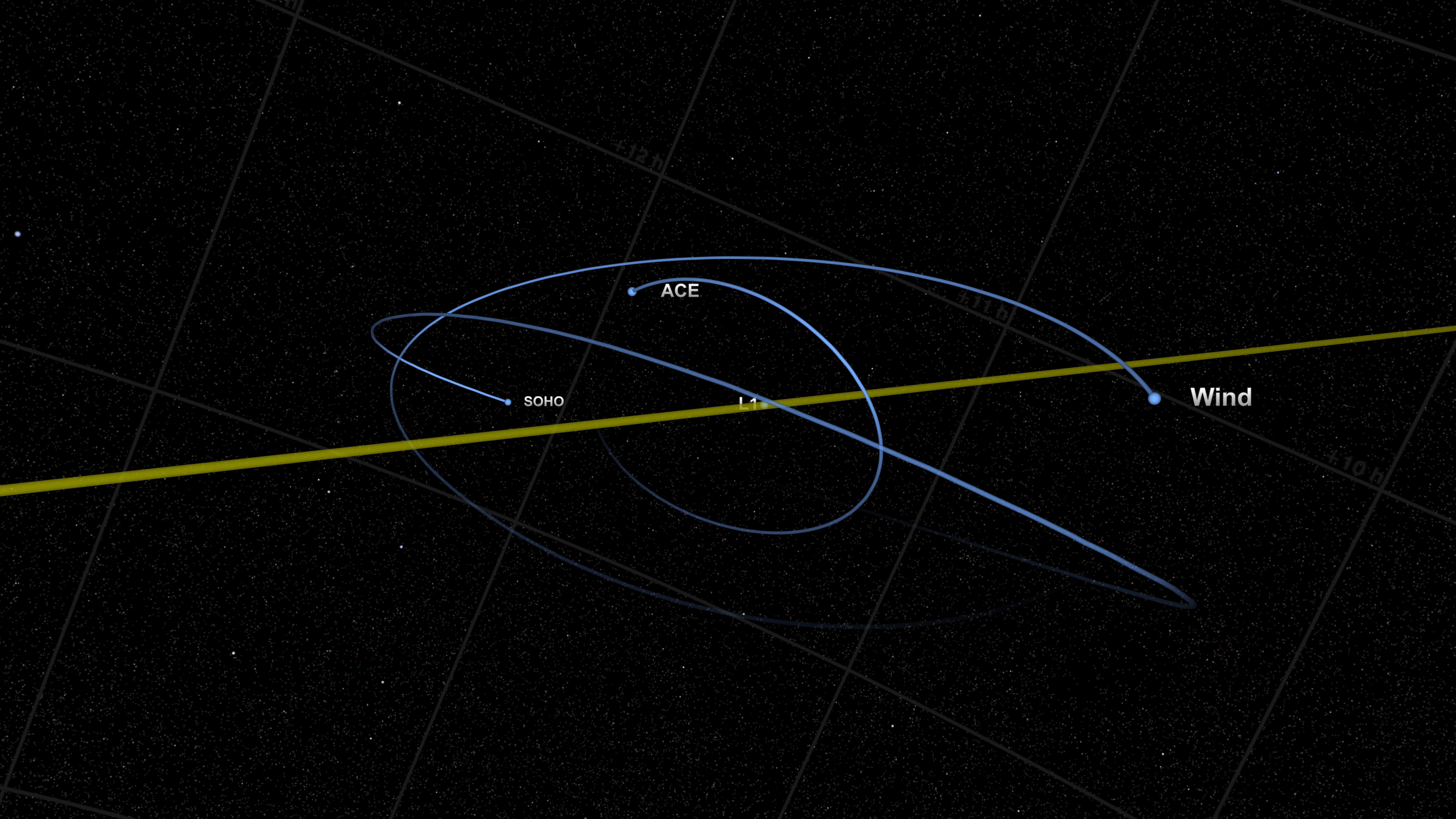
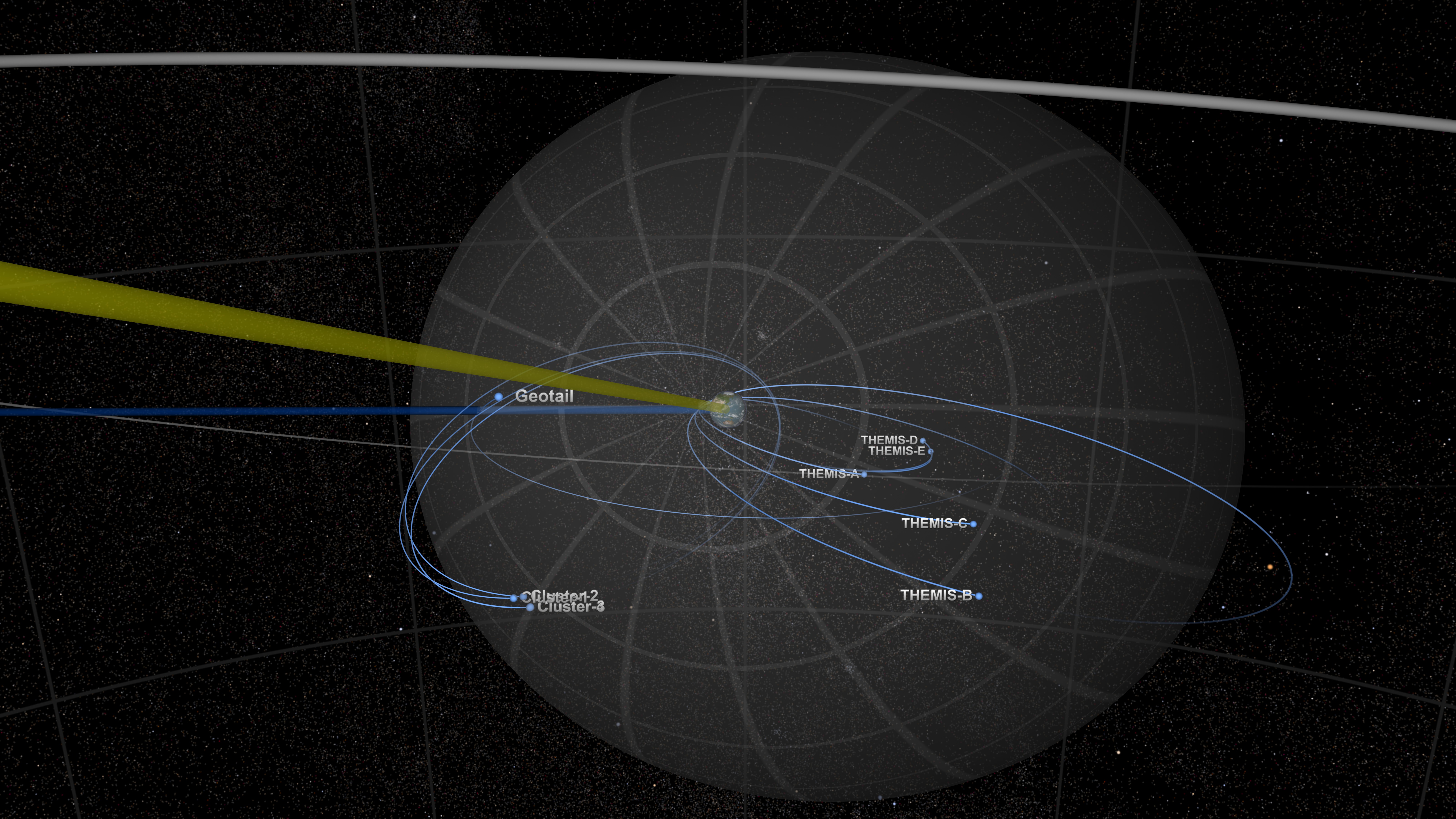
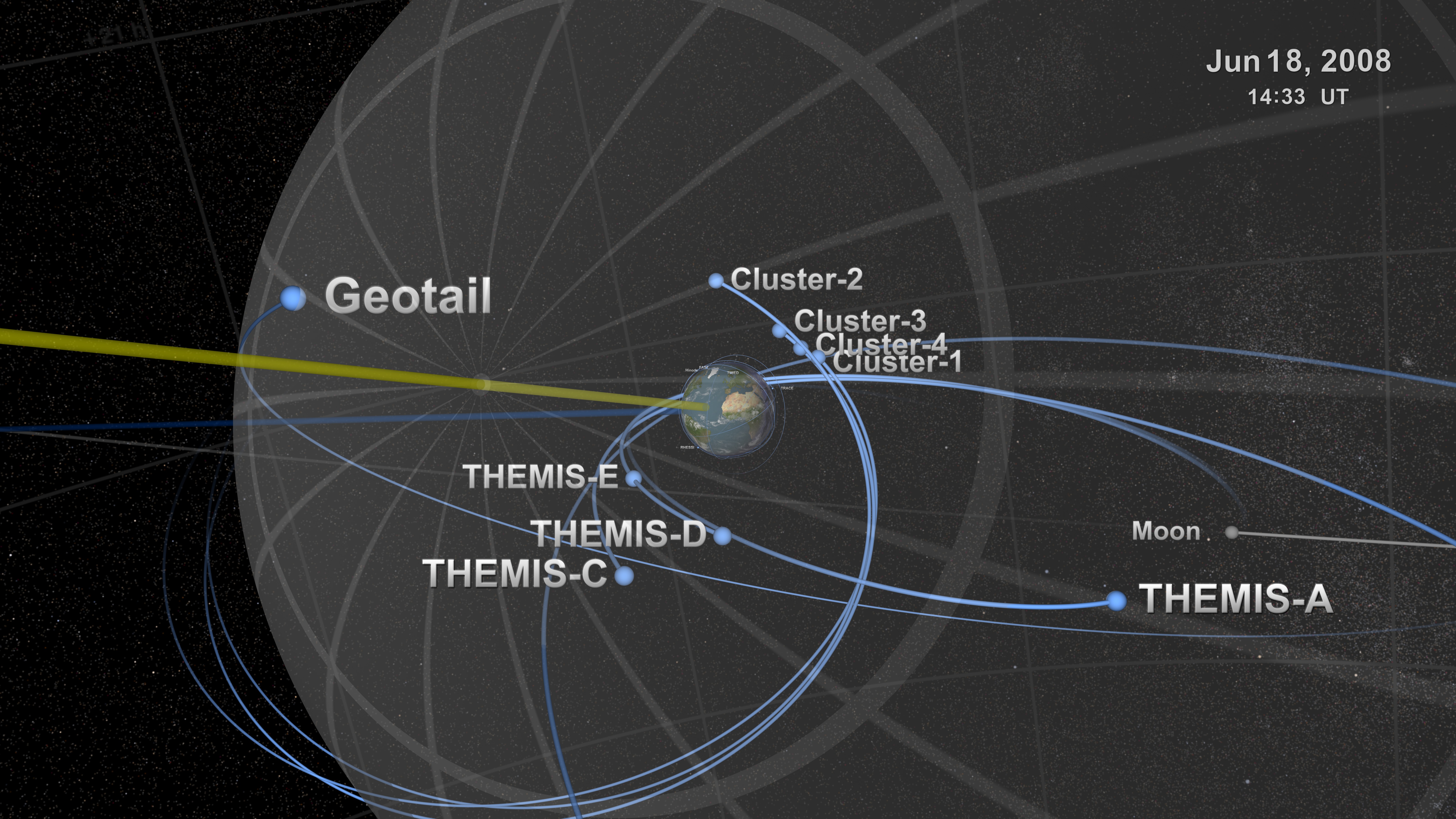
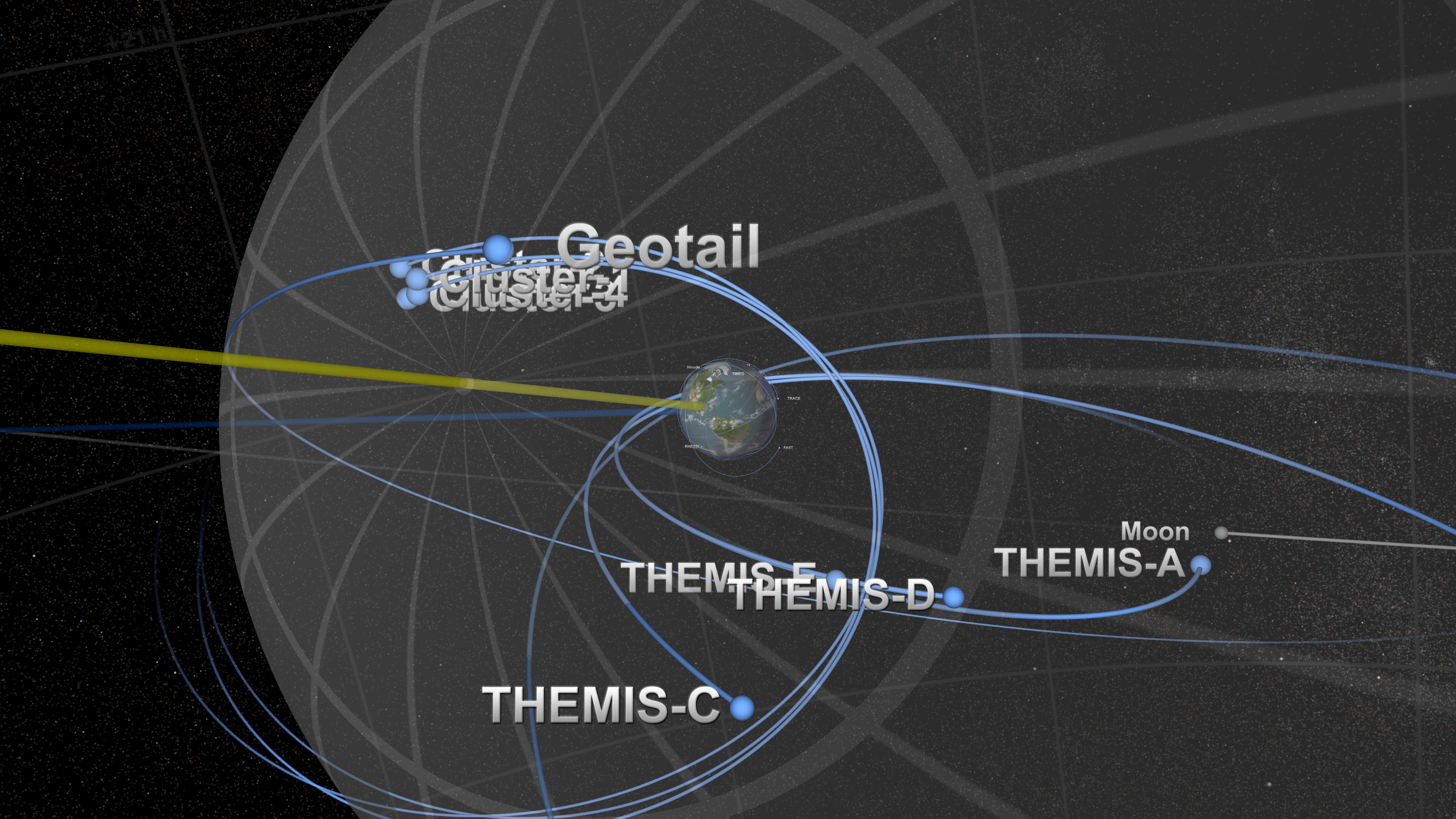
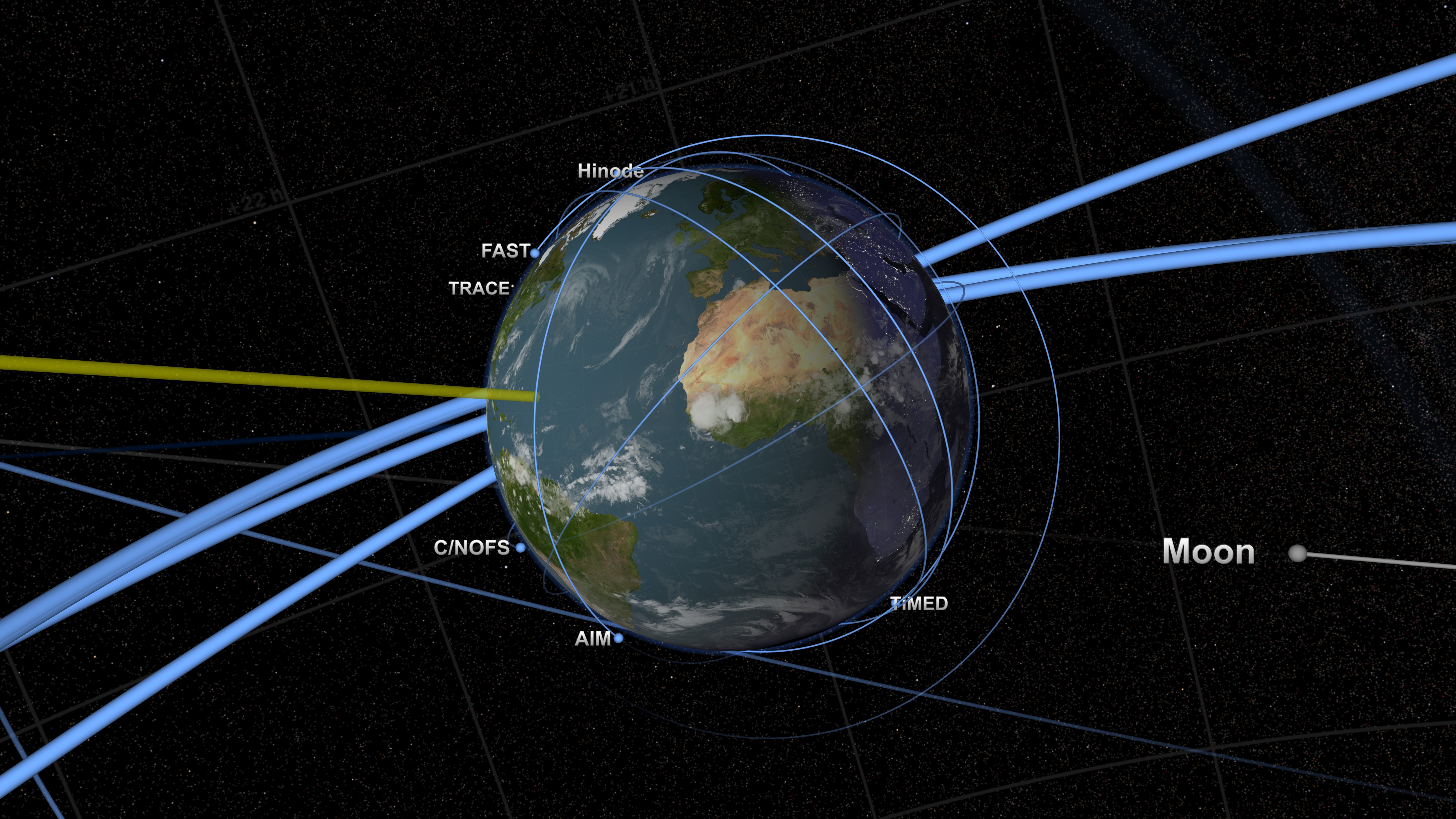
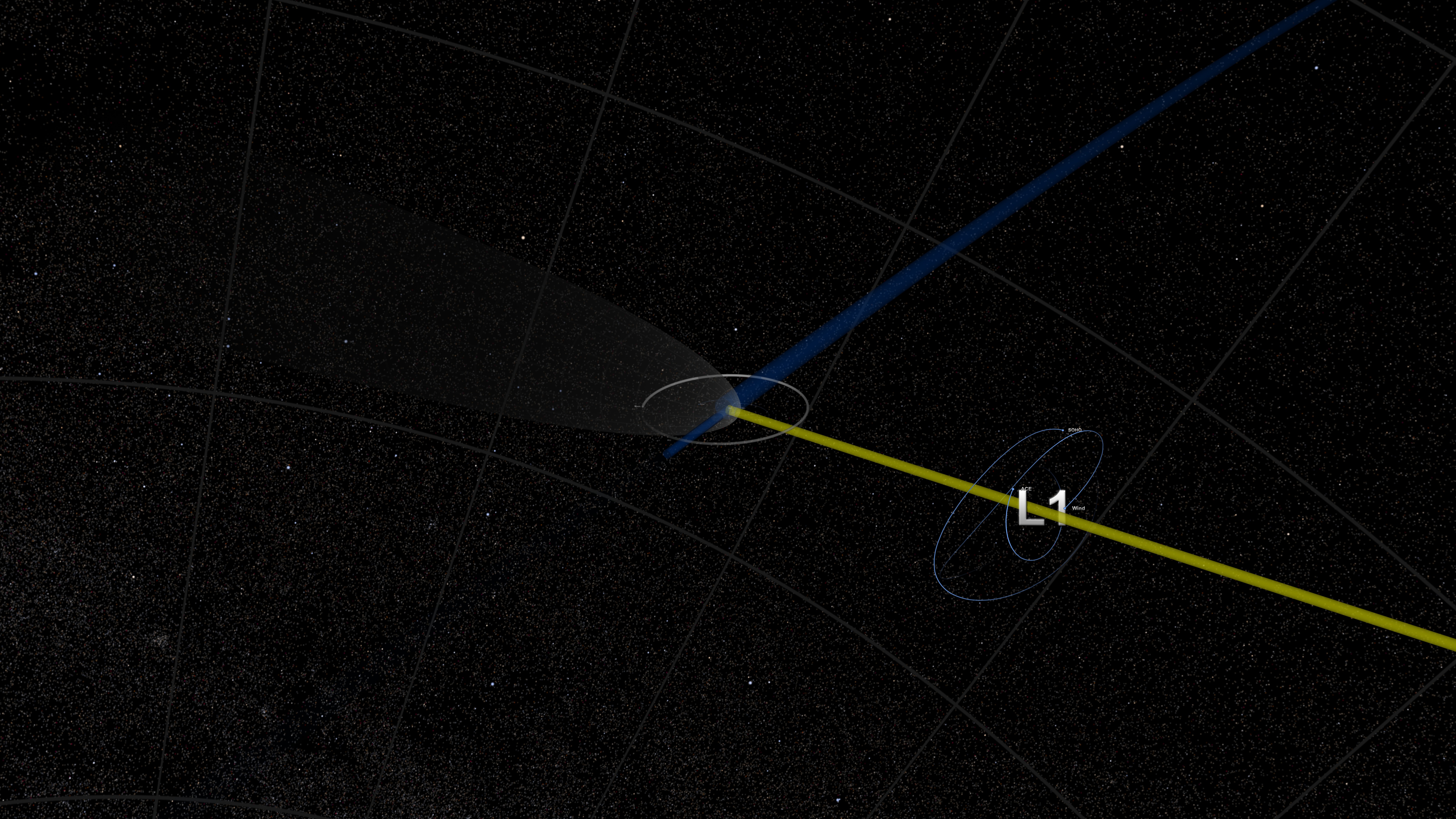
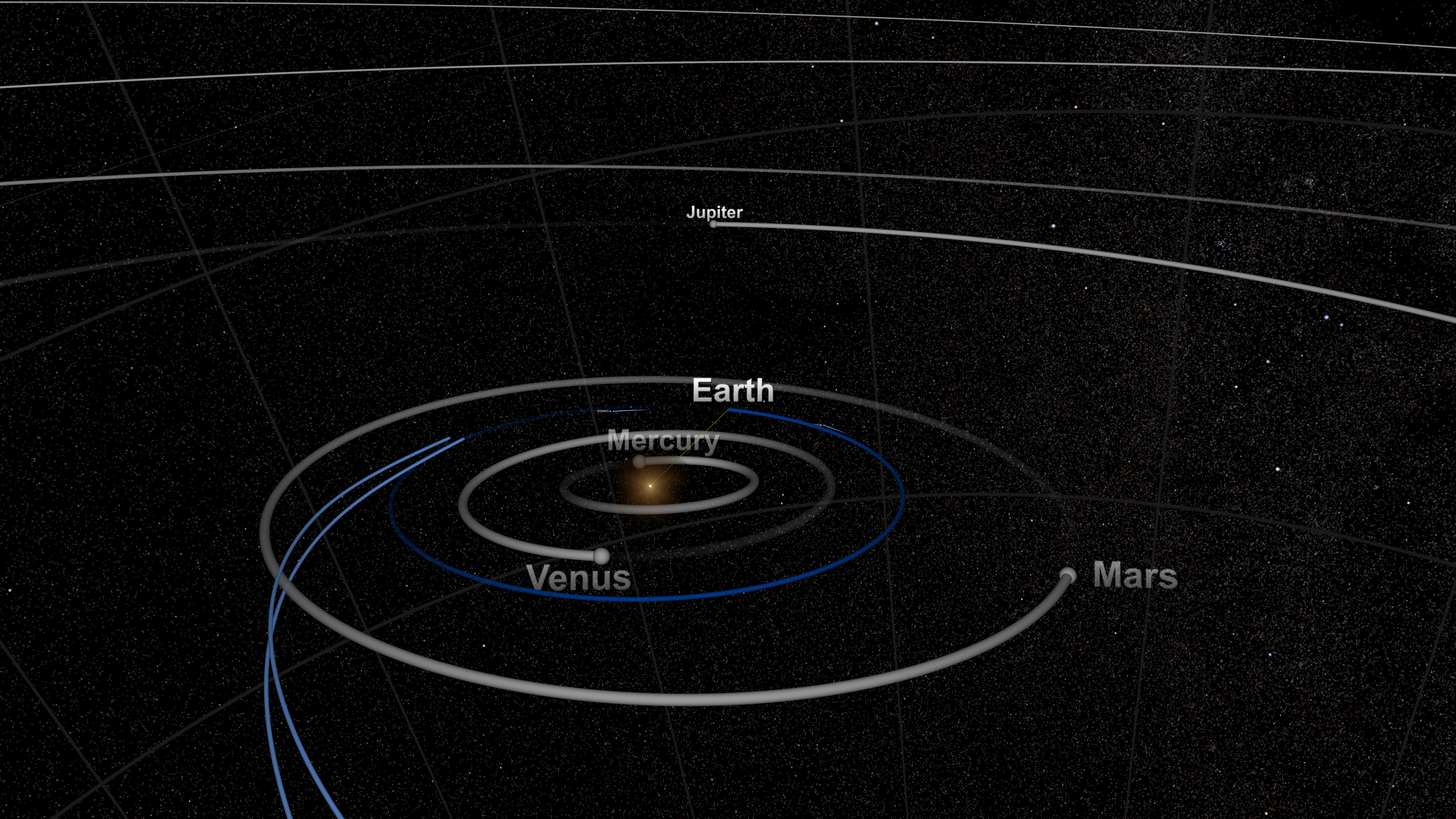
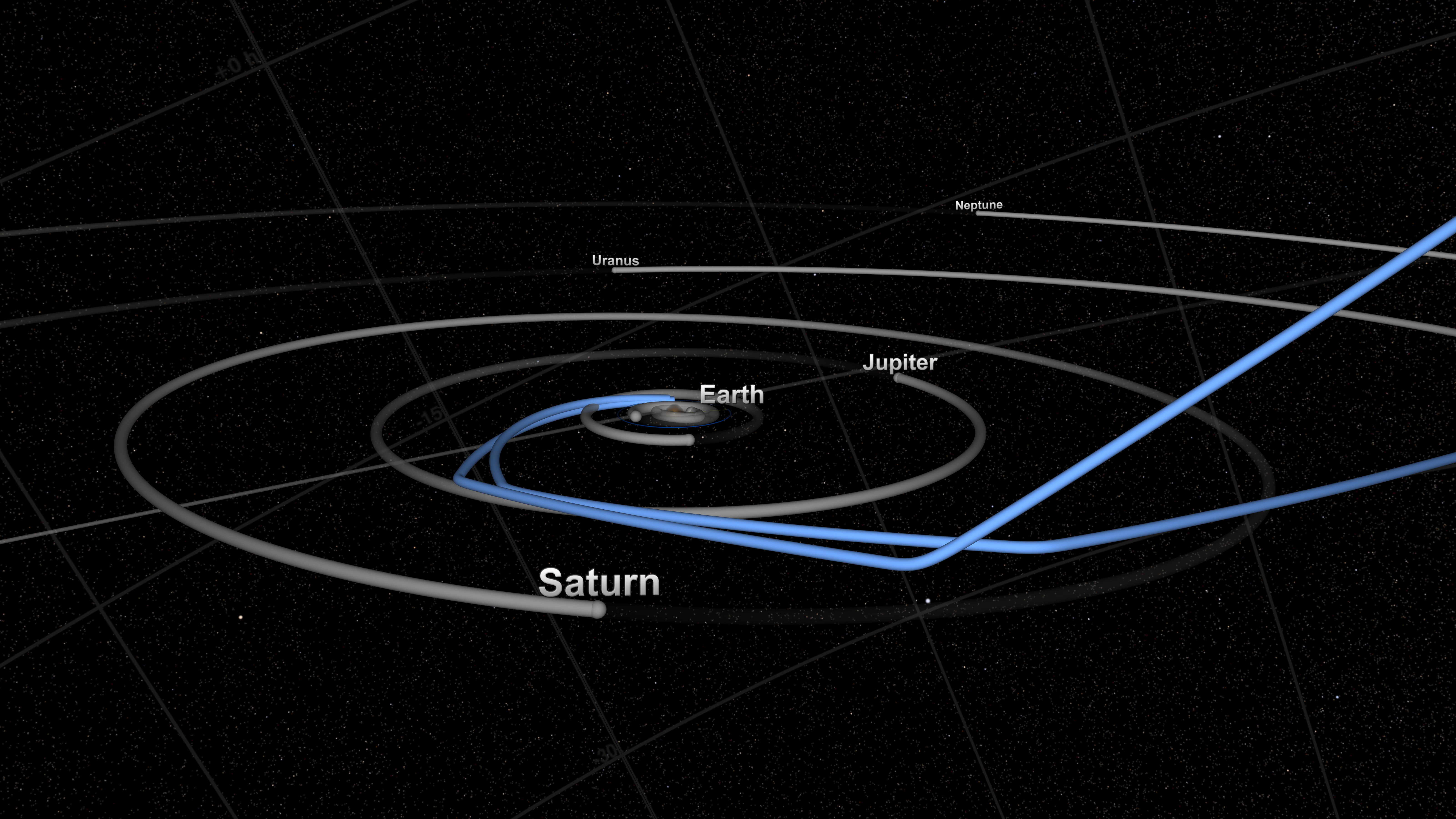
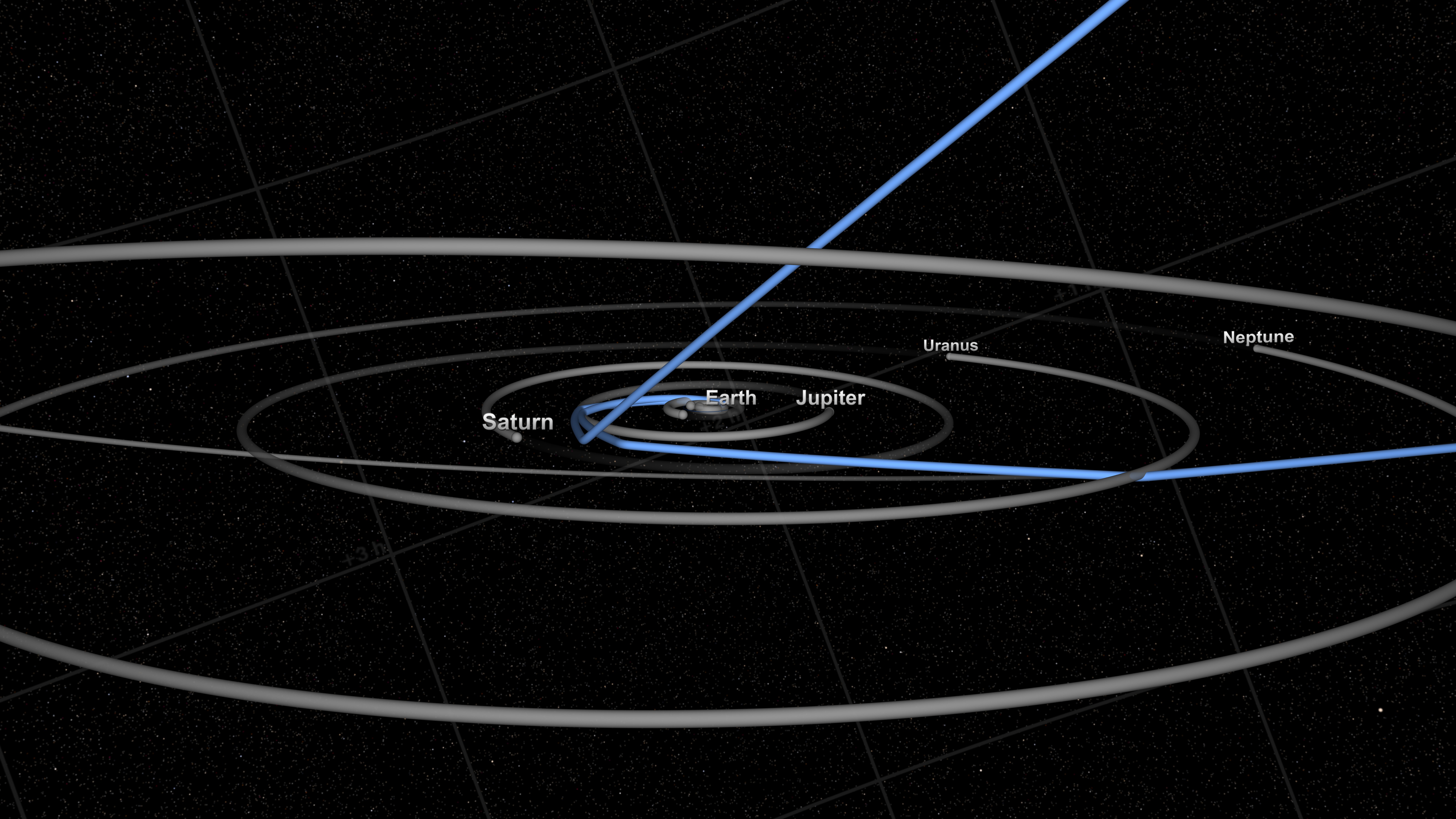
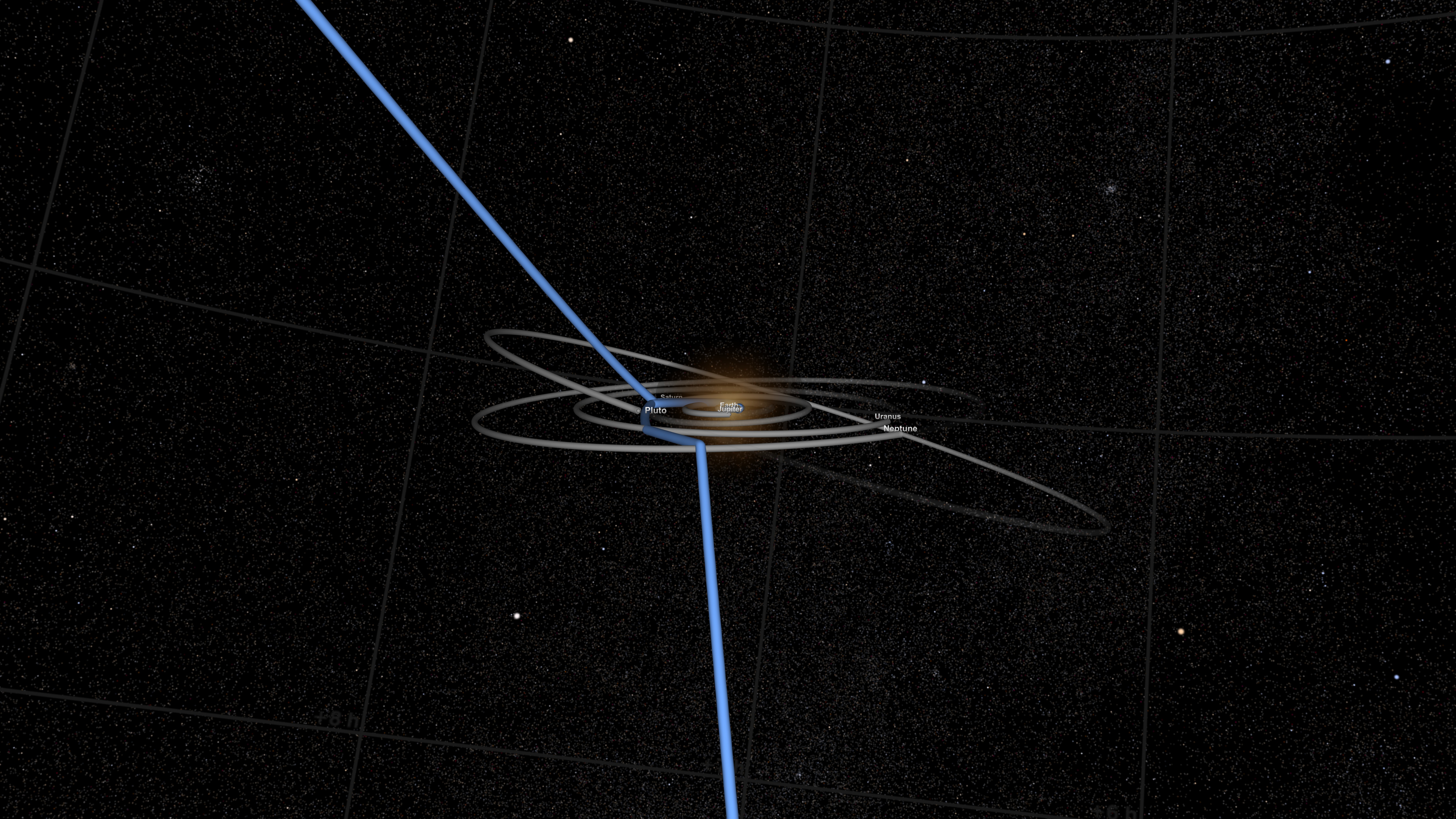
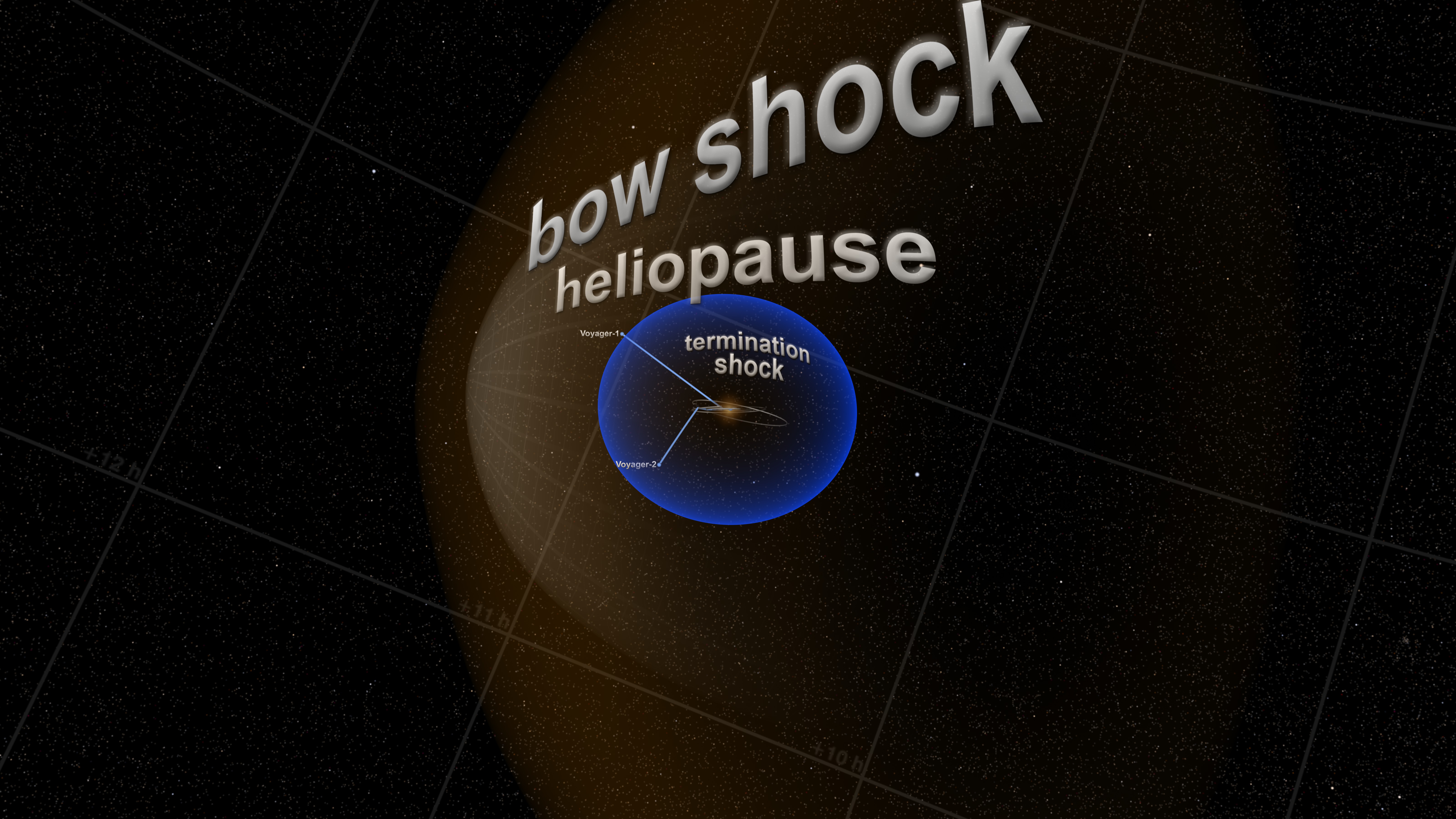
Sentinels of the Heliosphere
As a society dependent on technology, both in everyday life, and as part of our economic growth, space weather becomes increasingly important. Changes in space weather, either by solar events or geomagnetic events, can disrupt and even damage power grids and satellite communications. Space weather events can also generate x-rays and gamma-rays, as well as particle radiations, that can jeopardize the lives of astronauts living and working in space.
This visualization tours the regions of near-Earth orbit; the Earth's magnetosphere, sometimes called geospace; the region between the Earth and the Sun; and finally out beyond Pluto, where Voyager 1 and 2 are exploring the boundary between the Sun and the rest of our Milky Way galaxy. Along the way, we see these regions patrolled by a fleet of satellites that make up NASA's Heliophysics Observatory Telescopes. Many of these spacecraft do not take images in the conventional sense but record fields, particle energies and fluxes in situ. Many of these missions are operated in conjunction with international partners, such as the European Space Agency (ESA) and the Japanese Space Agency (JAXA).
The Earth and distances are to scale. Larger objects are used to represent the satellites and other planets for clarity.
Here are the spacecraft featured in this movie:
Near-Earth Fleet:
- Hinode: Observes the Sun in multiple wavelengths up to x-rays. SVS page
- RHESSI : Observes the Sun in x-rays and gamma-rays. SVS page
- TRACE: Observes the Sun in visible and ultraviolet wavelengths. SVS page
- TIMED: Studies the upper layers (40-110 miles up) of the Earth's atmosphere.
- FAST: Measures particles and fields in regions where aurora form.
- CINDI: Measures interactions of neutral and charged particles in the ionosphere.
- AIM: Images and measures noctilucent clouds. SVS page
Geospace Fleet:
- Geotail: Conducts measurements of electrons and ions in the Earth's magnetotail.
- Cluster: This is a group of four satellites which fly in formation to measure how particles and fields in the magnetosphere vary in space and time. SVS page
- THEMIS: This is a fleet of five satellites to study how magnetospheric instabilities produce substorms. SVS page
L1 Fleet:
The L1 point is a Lagrange Point, a point between the Earth and the Sun where the gravitational pull is approximately equal. Spacecraft can orbit this location for continuous coverage of the Sun.- SOHO: Studies the Sun with cameras and a multitude of other instruments. SVS page
- ACE: Measures the composition and characteristics of the solar wind.
- Wind: Measures particle flows and fields in the solar wind.
Heliospheric Fleet
- STEREO-A and B: These two satellites observe the Sun, with imagers and particle detectors, off the Earth-Sun line, providing a 3-D view of solar activity. SVS page
Heliopause Fleet
- Voyager 1 and 2: These spacecraft conducted the original 'Planetary Grand Tour' of the solar system in the 1970s and 1980s. They have now travelled further than any human-built spacecraft and are still returning measurements of the interplanetary medium. SVS page
This enhanced, narrated visualization was shown at the SIGGRAPH 2009 Computer Animation Festival in New Orleans, LA in August 2009; an eariler version created for AGU was called NASA's Heliophysics Observatories Study the Sun and Geospace.






















Related
Visualization Credits
Greg Shirah (NASA/GSFC): Lead Animator
Ernie Wright (UMBC): Animator
Tom Bridgman (Global Science and Technology, Inc.): Animator
Horace Mitchell (NASA/GSFC): Animator
Trent L. Schindler (UMBC): Animator
Cindy Starr (Global Science and Technology, Inc.): Visualizer
Stuart A. Snodgrass (HTSI): Video Editor
Michael Starobin (HTSI): Narrator
Rani Gran (NASA/GSFC): Producer
Jeffrey Hayes (NASA/HQ): Scientist
Jennifer Rumburg (NASA/OSC): Scientist
Michael Starobin (HTSI): Writer
Ernie Wright (UMBC): Animator
Tom Bridgman (Global Science and Technology, Inc.): Animator
Horace Mitchell (NASA/GSFC): Animator
Trent L. Schindler (UMBC): Animator
Cindy Starr (Global Science and Technology, Inc.): Visualizer
Stuart A. Snodgrass (HTSI): Video Editor
Michael Starobin (HTSI): Narrator
Rani Gran (NASA/GSFC): Producer
Jeffrey Hayes (NASA/HQ): Scientist
Jennifer Rumburg (NASA/OSC): Scientist
Michael Starobin (HTSI): Writer
Please give credit for this item to:
NASA/Goddard Space Flight Center Scientific Visualization Studio
NASA/Goddard Space Flight Center Scientific Visualization Studio
Short URL to share this page:
https://svs.gsfc.nasa.gov/3595
Missions:
ACE
AIM
CINDI
Hinode (Solar-b)
Mercury
RHESSI
SOHO
STEREO
THEMIS
TIMED
TRACE
Voyager
Wind
Data Used:
Note: While we identify the data sets used in these visualizations, we do not store any further details nor the data sets themselves on our site.
This item is part of these series:
Narrated Movies
Goddard Best of 2009 Film Festival
Goddard Shorts
Astrophysics Stills
Heliophysics Fleet
Keywords:
SVS >> Energetic Particles
SVS >> Geomagnetic Field
SVS >> HDTV
SVS >> Heliosphere
SVS >> Magnetosphere
SVS >> Mars
SVS >> Mercury
SVS >> Moon
SVS >> SOHO
SVS >> Satellite
SVS >> Satellite dynamics
SVS >> Solar Wind
SVS >> Spacecraft
SVS >> Venus
SVS >> Orbit
SVS >> Space Weather
SVS >> Hyperwall
SVS >> THEMIS
SVS >> AIM
SVS >> Solar System
SVS >> Heliopause
SVS >> iPod
SVS >> Noctilucent Clouds
SVS >> Edited Feature
SVS >> Electromagnetic Spectrum
SVS >> RHESSI
SVS >> Auroral Substorm
SVS >> Heliophysics
SVS >> TRACE
SVS >> Copenhagen
DLESE >> Narrated
SVS >> Voice Over Talent
SVS >> Hinode
SVS >> STEREO
SVS >> For Educators
SVS >> Atmosphere >> Winds >> Circulation
SVS >> Geospace
NASA Science >> Earth
NASA Science >> Sun
NASA Science >> Planets and Moons
GCMD >> Earth Science >> Sun-earth Interactions >> Ionosphere/Magnetosphere Dynamics >> Aurorae
GCMD >> Earth Science >> Sun-earth Interactions >> Solar Activity >> Coronal Mass Ejections
GCMD keywords can be found on the Internet with the following citation: Olsen, L.M., G. Major, K. Shein, J. Scialdone, S. Ritz, T. Stevens, M. Morahan, A. Aleman, R. Vogel, S. Leicester, H. Weir, M. Meaux, S. Grebas, C.Solomon, M. Holland, T. Northcutt, R. A. Restrepo, R. Bilodeau, 2013. NASA/Global Change Master Directory (GCMD) Earth Science Keywords. Version 8.0.0.0.0
https://svs.gsfc.nasa.gov/3595
Missions:
ACE
AIM
CINDI
Hinode (Solar-b)
Mercury
RHESSI
SOHO
STEREO
THEMIS
TIMED
TRACE
Voyager
Wind
Data Used:
Hipparcos/Telescope/Hipparcos Catalogue
DatabaseAeronomy of Ice in the Mesosphere (AIM)
Hinode (Solar-B)/Solar Optical Telescope (SOT)
Hipparcos/Telescope/Tycho 2 Catalogue also referred to as: Tycho Catalogue
DatabaseCPC (Climate Prediction Center) Cloud Composite
Data Compilation - Climate Prediction Center (CPC)
Global cloud cover from multiple satellites
SSCweb also referred to as: SSCweb ephemerides
Ephemeris - NASA/GSFC Space Physics Data Facility - November 1, 2006 - September 30, 2008
Satellite ephemerides
Advanced Composition Explorer (ACE)
C/NOFS/Coupled Ion Neutral Dynamics Investigation (CINDI)
TOPEX/Poseidon/Sea Surface Height Anomaly
JPL/Horizon Orbital Ephemerides
Ephemeris - NASA/JPL - November 1, 2006 - September 30, 2008
Planetary ephemerides
STEREO
The STEREO mission consists of two Sun-observing spacecraft that will travel around the Sun on orbits slightly inside and slightly outside Earth's orbit.
TRACE
The TRACE satellite views the Sun at ultraviolet wavelengths with high temporal (approximately 1-12 seconds) and spatial (1 arcsecond per pixel) resolution. Launched on April 2, 1998, it orbits the Earth in a Sun-synchronous orbit.
RHESSI/X-ray Imaging Spectrometer
The RHESSI instrument is an imaging spectrometer observing the Sun at X-ray to gamma-rays (photon energies of 3 keV to 17 MeV) at time resolutions of a few seconds. (eV stands for "electron volt" and is a unit of energy. Note that photons of visible light have energies of 2-3 eV. 1 keV is a thousand electron volts and 1 MeV is a million electron volts.
SOHO
NASA and ESA
SOHO monitors the Sun with a variety of instruments.
Among the SOHO instruments is the Michelson Doppler Interferometer (MDI) and the Extreme ultraviolet Imaging Telescope (EIT).
This item is part of these series:
Narrated Movies
Goddard Best of 2009 Film Festival
Goddard Shorts
Astrophysics Stills
Heliophysics Fleet
Keywords:
SVS >> Energetic Particles
SVS >> Geomagnetic Field
SVS >> HDTV
SVS >> Heliosphere
SVS >> Magnetosphere
SVS >> Mars
SVS >> Mercury
SVS >> Moon
SVS >> SOHO
SVS >> Satellite
SVS >> Satellite dynamics
SVS >> Solar Wind
SVS >> Spacecraft
SVS >> Venus
SVS >> Orbit
SVS >> Space Weather
SVS >> Hyperwall
SVS >> THEMIS
SVS >> AIM
SVS >> Solar System
SVS >> Heliopause
SVS >> iPod
SVS >> Noctilucent Clouds
SVS >> Edited Feature
SVS >> Electromagnetic Spectrum
SVS >> RHESSI
SVS >> Auroral Substorm
SVS >> Heliophysics
SVS >> TRACE
SVS >> Copenhagen
DLESE >> Narrated
SVS >> Voice Over Talent
SVS >> Hinode
SVS >> STEREO
SVS >> For Educators
SVS >> Atmosphere >> Winds >> Circulation
SVS >> Geospace
NASA Science >> Earth
NASA Science >> Sun
NASA Science >> Planets and Moons
GCMD >> Earth Science >> Sun-earth Interactions >> Ionosphere/Magnetosphere Dynamics >> Aurorae
GCMD >> Earth Science >> Sun-earth Interactions >> Solar Activity >> Coronal Mass Ejections
GCMD keywords can be found on the Internet with the following citation: Olsen, L.M., G. Major, K. Shein, J. Scialdone, S. Ritz, T. Stevens, M. Morahan, A. Aleman, R. Vogel, S. Leicester, H. Weir, M. Meaux, S. Grebas, C.Solomon, M. Holland, T. Northcutt, R. A. Restrepo, R. Bilodeau, 2013. NASA/Global Change Master Directory (GCMD) Earth Science Keywords. Version 8.0.0.0.0
